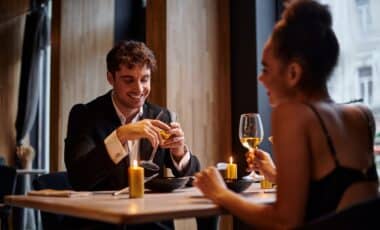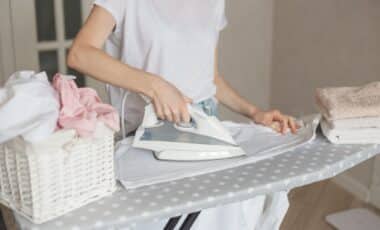 Mykita flagship in Bangkok
Mykita flagship in Bangkok
Even if you aren’t familiar with the name Mykita, trust us, you’ll be able pick their frames out of a lineup of random eyewear. One of Mykita’s most iconic innovations is the screwless eyeglasses, made possible with thin metal legs that connect to the frame by coiling its end in a spiral. Other marked signs of the Mykita brand include light-weighted sorcery and strikingly clean design, from its eyewear to its showrooms around the world.
As the brand launched its first flagship in Thailand last month at the new Velaa Sindhorn Village, we caught up with one of the co-founders of this made-in-Berlin eyewear brand, Moritz Krüger, to uncover the secret of Mykita’s success and why they are like no other eyewear brand in the world.
 Moritz Krüger
Moritz Krüger
So first of all, how does it feel to open Mykita’s first flagship in Thailand?
It’s very exciting and very cool. It takes me back three years ago, in 2016, when we celebrated 10 years in Bangkok with an exhibition at Bangkok Citycity Gallery. It was transparent for me that people here receive and understand the Mykita brand. Since our first show in Paris in 2004 and then in Milan the year after, we had our very first Thai customers, and it felt like it has grown organically since then, developing into loyalty. We feel that we have a strong connection with Thai customers, so it became very logical that if we find the right place and the right opportunity that we would open a shop here for customers to have a permanent place to view all our collections.
Can you tell our readers a little bit about the Mykita store here at Velaa Sindhorn Village?
The first thing they should take in is the relaxed atmosphere that allows them to really see the portfolio of all our different collection in an intimate experience. We’re using very much the same ingredients we’ve been using since our first conceptual Mykita showroom in Berlin, opened in 2007. A lot of elements are ready-made design, like our Mykita wall, which comes from heavy-duty shelving we originally used in production to load heavy products. Another ingredient are airline cabinets. We’ve given them a second life in our store as tables.
Every one of our stores has its own colour as well. For our Bangkok showroom, we’ve chosen this muddy green, which we found to suit Bangkok well because, especially in the area, I still see green everywhere. Another thing to note is that you will never see the Mykita logo on our products. Everybody who knows about the brand can identify our product from its construction. I think the Mykita shop has the same kind of design language. Take the logos away and people would still know that this is a Mykita shop.
 The Mykita wall of the Bangkok flagship
The Mykita wall of the Bangkok flagship  Green powder-coated airline cabinets used as tables in the Bangkok Mykita flagship
Green powder-coated airline cabinets used as tables in the Bangkok Mykita flagship
Speaking about the Mykita wall and repurposed airline cabinets, have you always been passionate about upcycling or seeing items beyond their initial purpose?
Absolutely. You have to imagine being us in Berlin back in 2003, 2004. Starting a brand in Berlin wasn’t like starting one in New York, Milan or other established fashion industries where there are precedents. We had to find our own way and in a sense, that meant freedom as well. So there was a lot of positive improvisation in the sense that you could come up with your own original idea. Ready-made design was part of our design principle, and it really came from the fact that we had airline cabinets in the space that we were working in.
[Eyewear is] the most personal accessory that one can wear on the human body because it sits in front of your eyes…
— Moritz Krüger, co-founder of Mykita
 Photo: Courtesy of mykita.com
Photo: Courtesy of mykita.com
Who are your customers?
Mykita stores receive children, grandparents, all different kinds of customers from different demographics. We may have someone walking into the store, looking for something for everyday wear. He might be an engineer or a dentist. Or we have someone who is more on the fashion side and more interested in, say, our collaboration with Maison Margiela. I think this is something quite special about the brand. We don’t just cater to one kind of customer group. It’s more about the understated, timeless and iconic design made in Germany.
What are you most proud of so far?
One of the things I’m most proud of is that we’ve been able to grow the business to 450 people worldwide and counting. In the beginning, we were just a group of friends with a pioneering energy who enjoyed working together daily. I think that we have managed to preserve quite a lot of this while bringing in so many people to work in specific elements of what we do. There really is a spirit here, and it’s very strong and very sustainable. Personally, this is the driving force behind what I do. I enjoy spending time on the work campus and sharing time with all the talented people at Mykita.
How do you maintain this kind of sustainable corporate culture?
I think a very strong element of it is that we have this absolute vertical integration. We have a physical building in Berlin, where 300 people work. The roof covers everyone who is working for us, so things don’t get out of hand. If I draw something, I send that drawing directly to the manufacturer and he will do it and send it back to me. It’s a very personal approach. Respectful communication is also an understatement for us. At least two days a week, everybody eats lunch together. These and other things automatically form a strong bond internally, and that’s absolutely my recipe for success.
 Photos: Courtesy of mykita.com
Photos: Courtesy of mykita.com 
Define eyewear.
I think it’s the most personal accessory that one can wear on the human body because it sits in front of your eyes, which is the strongest point of communication. It has an immense function. It, of course, should correct your vision. It’s something that you might wear everyday to work, in your private time and maybe even when you go out for fun. It’s something that is very personal and needs to underline yourself. At the same time, it also has an element of transformation.
View some of Mykita’s collections, all available at the Mykita store at Velaa Sindhorn Village now, below:











See also: Rom Design Puts Thai Creatives Takarawong And Kanrapee Together In The ‘Spotlight’







